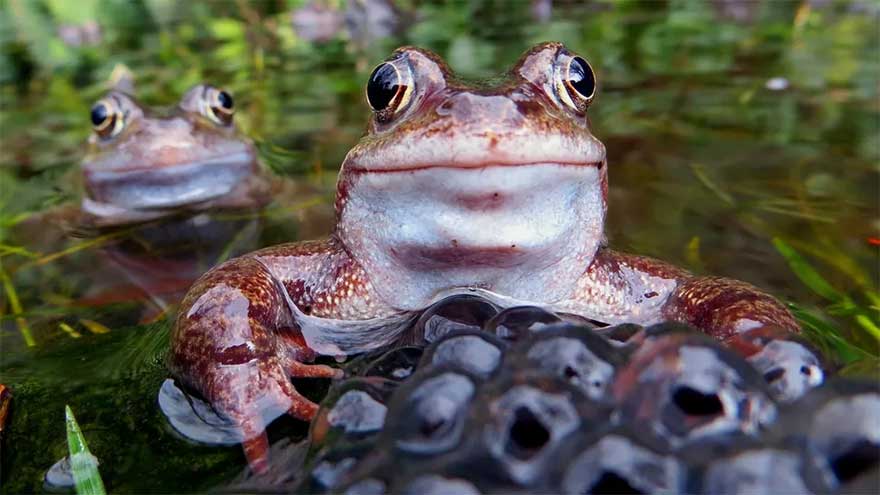(Web Desk) – Unlike humans, frogs and other amphibians don’t need to rely on their lungs to breathe; their unique skin helps them exchange oxygen and drink. But how do frogs breathe and drink through their skin?
Frog skin is complex: It’s thin, covered in glands that produce mucus to keep the skin moist, and porous enough to allow air molecules to permeate.
“Their skin] is designed to allow both oxygen to get into the skin, and water to be absorbed,” Christopher Raxworthy, a curator and herpetologist at the American Museum of Natural History in New York, told Live Science.
A network of small blood vessels right underneath the skin absorbs oxygen directly from water or the air, and also allows carbon dioxide to be driven out of the body in a process called cutaneous respiration, explained Kurt Schwenk, an evolutionary biologist at the University of Connecticut who has studied the breathing mechanisms of frogs and tadpoles. “It’s really almost identical to a lung system,” Raxworthy added.
Although frogs can also breathe through their lungs and the lining of their mouth, cutaneous respiration allows frogs to survive underwater and through long hibernations. “Almost without trying, just having skin that’s moist, and having some blood vessels in it, they’re going to exchange gas and water through their skin, whether they like it or not,” Schwenk said, although not all frogs depend on cutaneous respiration equally.
Meanwhile, tadpoles don’t have developed gills yet, so they need to breathe in air from the surface to survive. But when they’re hatchlings, they’re too small to break water’s surface tension. Instead, they create their own air bubbles.
In a 2020 study, Schwenk and his colleague observed the tadpoles swim right below the surface, where they quickly suck in air, forming a bubble. Then, they push the air bubble into their lungs.
Frogs’ porous skin is also how they drink. “That water is getting into all those spaces in the skin, and is then being absorbed across cell membranes into cells and into the bloodstream,” Schwenk added. Many frogs even have a highly vascularized area on their skin called a “drinking patch,” through which they can absorb a large amount of water.
Some frogs found in arid areas — like the trilling frog and the water-holding frogs living in Australian deserts — are especially adept at absorbing water during rainy seasons. “They store it, and then they go into burrows, into the ground, and sometimes they might even put an extra layer of mucus around them, and then they can survive on that water that they stored internally for months or even years until the next rains come,” Raxworthy explained.
Related Topics
